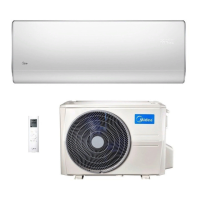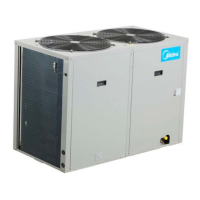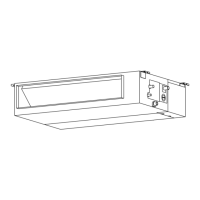14
Table 4-5
Item Description Image Notice
1
Connect the (low pressure side) hose
of a pressure gauge to the outdoor
unit gas pipe stop valve.
Before performing vacuum drying, make sure that
alltheoutdoorunitstopvalvesarermlyclosed.
2
Connect the hose to the vacuum
pump.
1.Mixingofpumplubricantwithcompressoroil
could cause compressor malfunction and a one-
way valve should therefore be used to prevent
vacuum pump lubricant seeping into the piping
system.
2. Using a vacuum pump with a discharge in
excessof4L/sandaprecisionlevelof0.02mmHg
is recommended.
3
Connect the outdoor unit gas pipe
stop valve to water tank gas pipe
4
Connect the outdoor unit liquid pipe
stop valve to water tank liquid pipe
5
Start the vacuum pump and then
open the pressure gauge valves to
start vacuum the system.
6
After 15-20 minutes, close the
pressure gauge valves.
7
After a further 5 to 10 minutes check
the pressure gauge. If the gauge has
returned to zero, check for leakages
in the refrigerant piping. If the gauge
is no change, then vaccum drying is
OK.
8
Re-open the pressure gauge valves
and continue vacuum drying for at
least 20 minutes and until a pressure
dierenceof756mmHgormorehas
been achieved. Once the pressure
dierenceofatleast756mmHghas
been achieved, continue vacuum
drying for 20 minutes.
9
Close the pressure gauge valves and
then stop the vacuum pump.
10
After 1 hour, check the pressure
gauge. If the pressure in the piping
has not increased, the procedure
isnished.Ifthepressurehas
increased, check for leakages.
After vacuum drying, keep the hoses connected
to the pressure gauge and to the outdoor
unit stop valves, in preparation for refrigerant
charging.
4.5 Refrigerant charge
• Pipe length is 2~20m.
• If the pipe length is less than 10m, there is no need to add additional refrigerant charge.
• If the pipe length is more than 10m, adding additional refrigerant charge is necessary, and the rule is 20g/m for the additional pipe.

